A Studio Visit and Interview with Artist M. E. Klesse
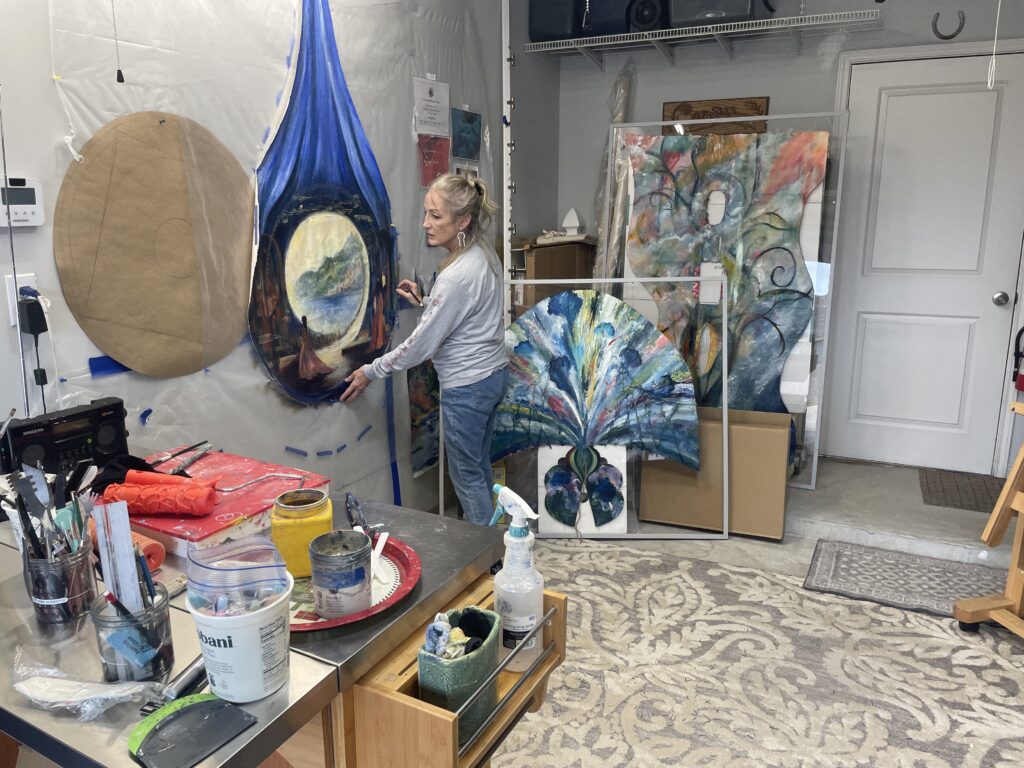
This studio visit takes us inside the working world of artist M. E. Klesse in Rockport, Texas. We’re invited to walk in with her and look around as she discusses how she creates, what motivates her, and the ideas that inspire her to make work that poses challenging questions about memory and experience. She lets us in on how she juggles several pieces at once, how sound and touch play into her process, and why she often has to act on an idea quickly before it slips away.
The moment we step into the studio, there is the warm, earthy smell of wax heating and paint settling into canvas. Tools crowd shelves, sculptures hang overhead, and pieces in progress lean patiently along the walls. Nothing feels still here. It’s a working space that conveys the feeling of someone always striving for the next milestone.
As we talk with Klesse, she shares how she arranges her space so that she can move seamlessly from wax to paint to sculpture without losing momentum, why her days never look the same, and how she often rolls a finished piece into a different room to see it in a different light. We stand beside her as she thinks ahead, too, imagining future studios in other places that have shaped her or stirred something in her, even as she continues building in this one, piece by piece.

M. E. Klesse is a multi-sensory artist based in Rockport, Texas, whose work has been exhibited internationally in cities such as New York, London, Rome, and Canada, as well as many other major US cities. Several of their pieces are part of permanent museum collections. Born in Point Pleasant, New Jersey, Klesse holds degrees in Philosophy from Rutgers University, as well as in Nursing and Management. Their professional background as a registered nurse and decades of volunteer work with individuals from alternative backgrounds have deeply informed their understanding of the human psyche. Formal art studies at The Pratt Institute and the New York Studio School further enrich this insight. Klesse’s artistic practice encompasses oil, cold wax, and encaustic painting, as well as tactile works in sculpture and assemblage. They create ‘artwork-clusters’, multi-sensory installations that integrate visual, tactile, and auditory elements, to engage viewers in dialogues about psychological trauma, survival, and the societal issues that contribute to these experiences.
1. Can you walk us through your studio space? What’s the first thing you see when you walk in?
Step into my studio and you’re immediately greeted by a towering movable rack brimming with supplies—just a fraction of my ever-growing cache of materials. Mind your head; suspended sculptures often hang overhead, mid-process, as they dry in their slow metamorphosis. To the right lies my primary workspace, anchored by an eight-foot wall devoted to large-scale canvases. Here, multiple layers of unstretched canvas hang with sheets of plastic between them, allowing me to work on several pieces at once. This is where the acrylic underpaintings are born: fluid, gestural, and raw.
Extending from this area is a stainless-topped cabinet that serves as my encaustic workstation. Inside are gloves, texture tools, and the organised chaos of a working artist. On top, a heating platform and heat gun hum beside an open zone where molten wax transforms into luminous surfaces. Beyond it, an eight-foot table hosts pieces in various stages of drying and cradles my ever-faithful Sta-Wet palette. Turning the corner, another six-foot table awaits: my gesso and substrate prep area, which occasionally doubles as an overflow drying space.
Along the left wall, a rack overflows with oil paints and encaustic blocks before leading to a square worktable laden with the essentials: a hefty ten-pound bag of encaustic medium, an assortment of brushes, carving tools, ladles, and spatulas, and a tray of water tubs for cleanup. Finally, my French easel stands as a quiet relic, now more a perch for T-squares and levels than a painting companion, ever since my focus shifted to large-scale and encaustic work. Cramped yet alive with energy, this studio is a laboratory of process and transformation, but change is on the horizon. Soon, I’ll be moving into a larger space, ready to expand both the scale and scope of creation.
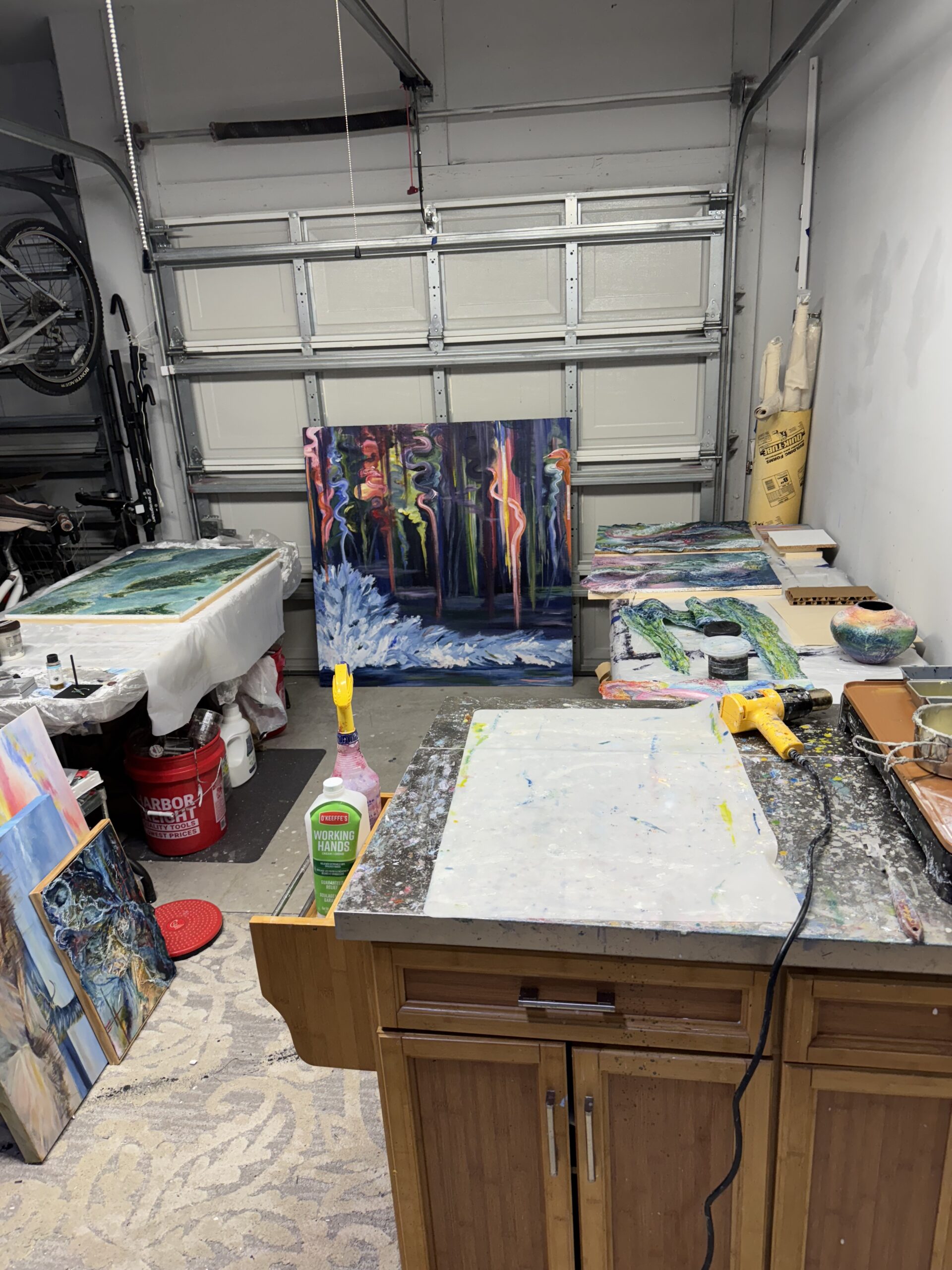
3. What materials or tools do you keep closest to you while working?
For my encaustic practice, I maintain several pans of plain medium and several with colored medium, heating at all times. Block pigments sit ready for melting directly on the heat surface for fine details, but the bulk of my colour comes from mixing pigment into or onto clear wax. Nearby, on a supply rack, I keep an array of fibres and textiles, though I keep a more extensive selection in a slightly more distant storage area. Sculpting tools sit just a few steps away, within easy reach. When I shift to gesso preparation or acrylic-based work, I draw from a different cache of materials stored in a nearby but separate supply zone. This layered arrangement, immediate, secondary, and remote, lets me maintain a fluid workflow while keeping my studio space organised and responsive to the demands of each medium.

4. Are there certain books, film stills, or notes that stay in the studio as part of your process?
I keep an eclectic selection of books and magazines near the studio, mainly for ambience rather than consultation. When researching a new piece, I conduct a thorough online search for material specific to its theme. What remains close at hand, though, are visual and emotional triggers pinned to the wall: a memorial card from a friend’s mother’s service, a postcard from an artist’s show in Colorado. These seemingly minor artefacts silently anchor the energy of my work and invite the unexpected.
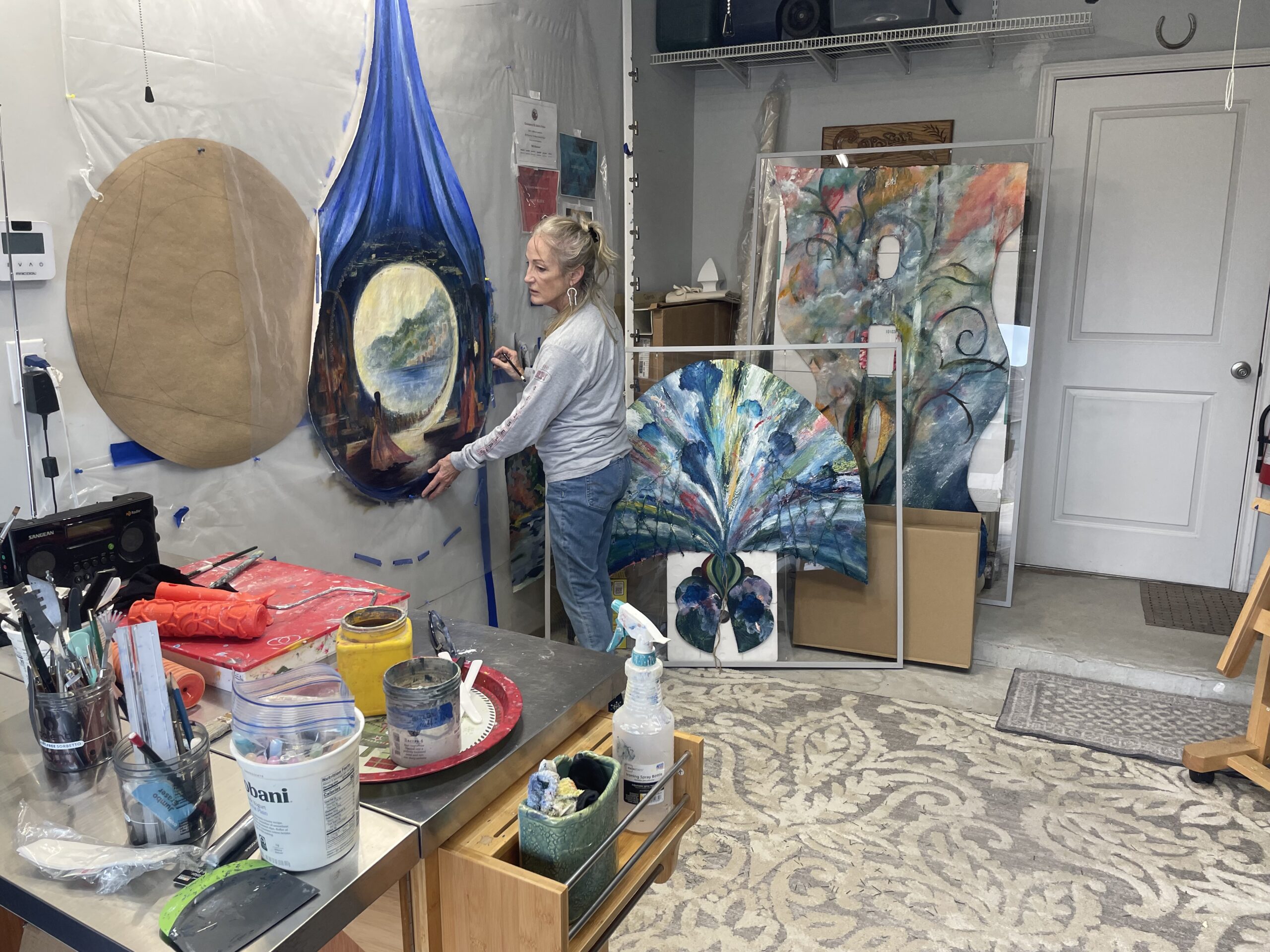
5. How do you usually keep track of ideas as they move from your journals into the canvas?
I don’t work from image journals or sketchbooks. Instead, ideas emerge unannounced in my consciousness, often sparked by something I’ve read or seen, and I typically begin working on them within a day or two. Occasionally, if an idea feels especially compelling, I’ll record it in my inventory list as the next piece. But if I don’t begin it within the week, it’s almost always discarded. My abstract and encaustic work is driven by emotional response; the inspiration must be acted on quickly or the feeling fades and the spark is gone.

6. What does a typical day in this studio look like for you?
I don’t really have a “typical” day in the studio. I typically spend around 25–40 hours a week in production and an additional 15–30 hours on research and marketing. My production time is unpredictable; it might include five quiet hours in the middle of the night and a couple of additional sessions during the day, depending on my mood, inspiration, and workload. Research and marketing, on the other hand, tend to happen during more regular hours, usually between 7 a.m. and 9 p.m. When I’m preparing for a large show, most of the research and marketing are completed beforehand, allowing me to focus fully on creating. During those periods, I might work 10–14 hours a day for several days or even weeks at a time. By the end of a production cycle, I’m usually spent and take a few days away from the studio to rest and recharge.
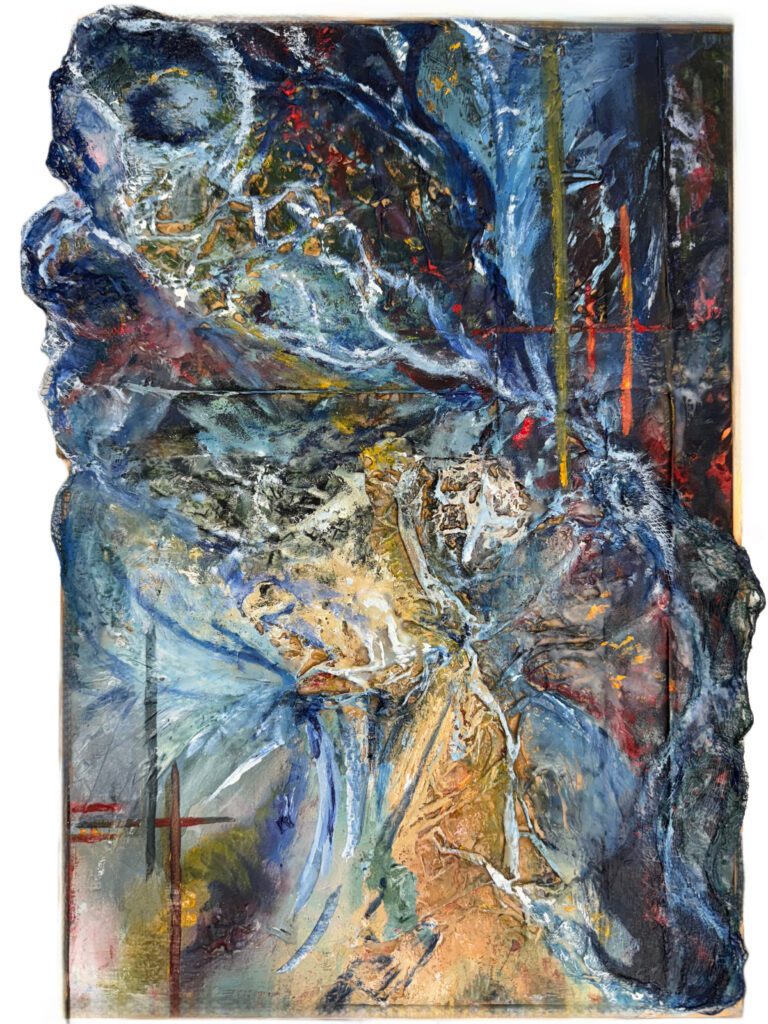
7. How does the light in this space change the way you approach a painting?
The lighting in my current studio doesn’t influence my work creatively; it simply serves to improve visibility. Without any natural light, the space is illuminated by multiple large fluorescent fixtures, giving it a distinctly industrial atmosphere. Because of this, the mood and inspiration for my work must come from within before I even enter the studio. I often carry my pieces into areas with different lighting conditions to evaluate color, contrast, and finishing touches. My new studio, however, will be naturally lit from both the northeast and the west, with shade cloths to soften the western light. I’m eager to see how this new environment might shape and deepen my creative process.
8. Do you have works in progress visible around the room, or do you prefer to focus on one piece at a time?
There are usually several works visible around the studio at any given time. Some are in various stages of drying, others are prepped and waiting to begin, and a few are awaiting final decisions or finishing touches. Pieces not currently intended for an upcoming show may sit on hiatus until I have the time or clarity to return to them.

9. Is there a spot in the studio where you usually pause to step back and look at the work differently?
I usually take the work out of the studio and into the house to see it in different lighting and atmospheres. I move it around to a few locations and view it several times throughout the process. This helps me see the piece with fresh eyes and notice things I might miss in the studio.
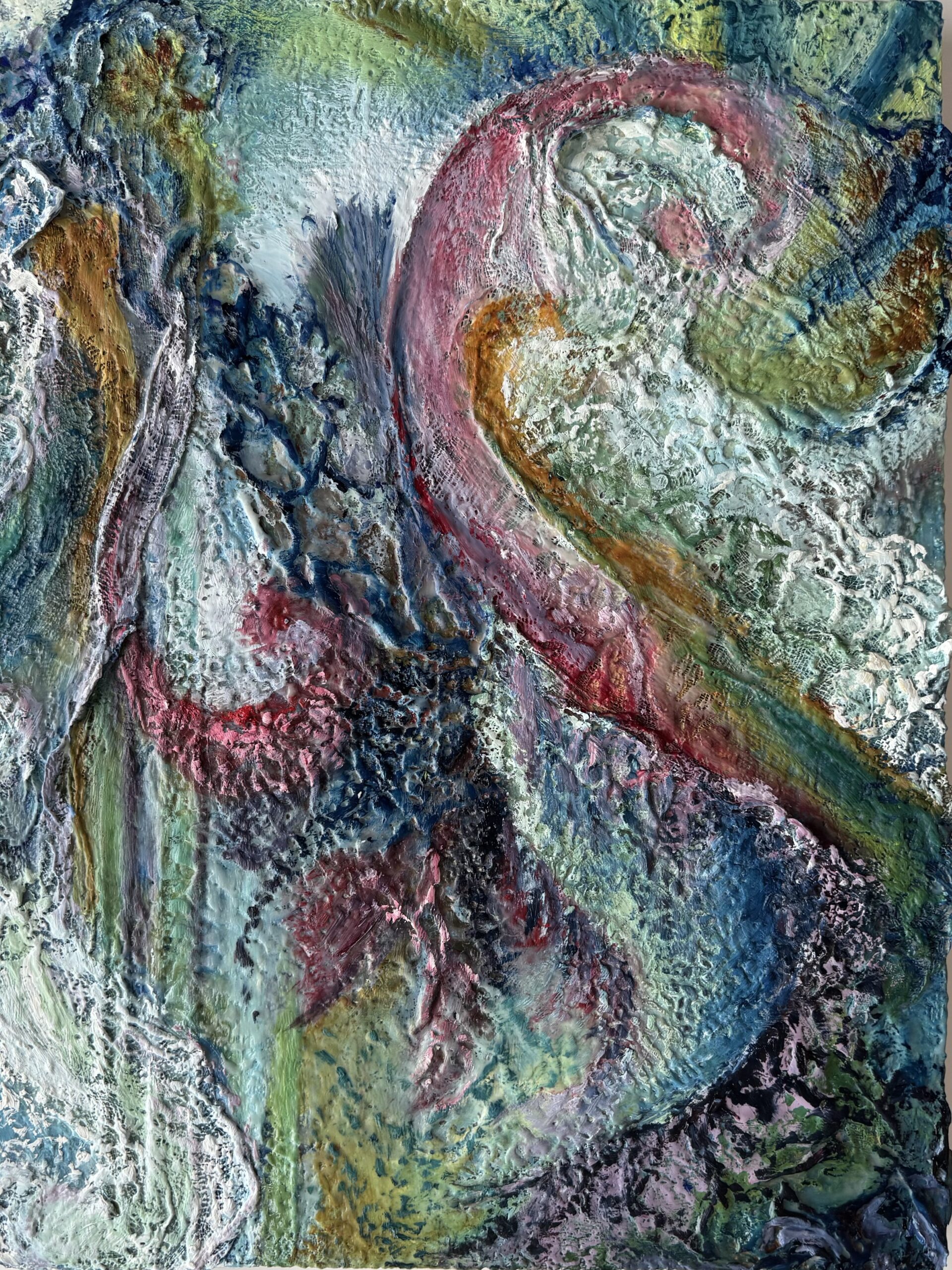
10. If you get a chance to set up your studio anywhere in the world, where would it be?
If I had unlimited resources, I’d love to have several studio locations. Participating in various residencies and retreats has shown me the immense inspiration that comes from experiencing new places and cultures. I’d love a studio just outside Florence for the light and rolling hills—with Venice and Rome only a few hours away for their rich art scenes. I’d also want a space in Manhattan to stay connected to the New York art world, one in Savannah for its unique charm and atmosphere, and others in the mountains of Vermont and along both the East and West Coast seashores, which have always been places of deep solace for me. Realistically, the best way to satisfy that long wish list might be to keep exploring artist residencies that offer those experiences in smaller, meaningful doses.

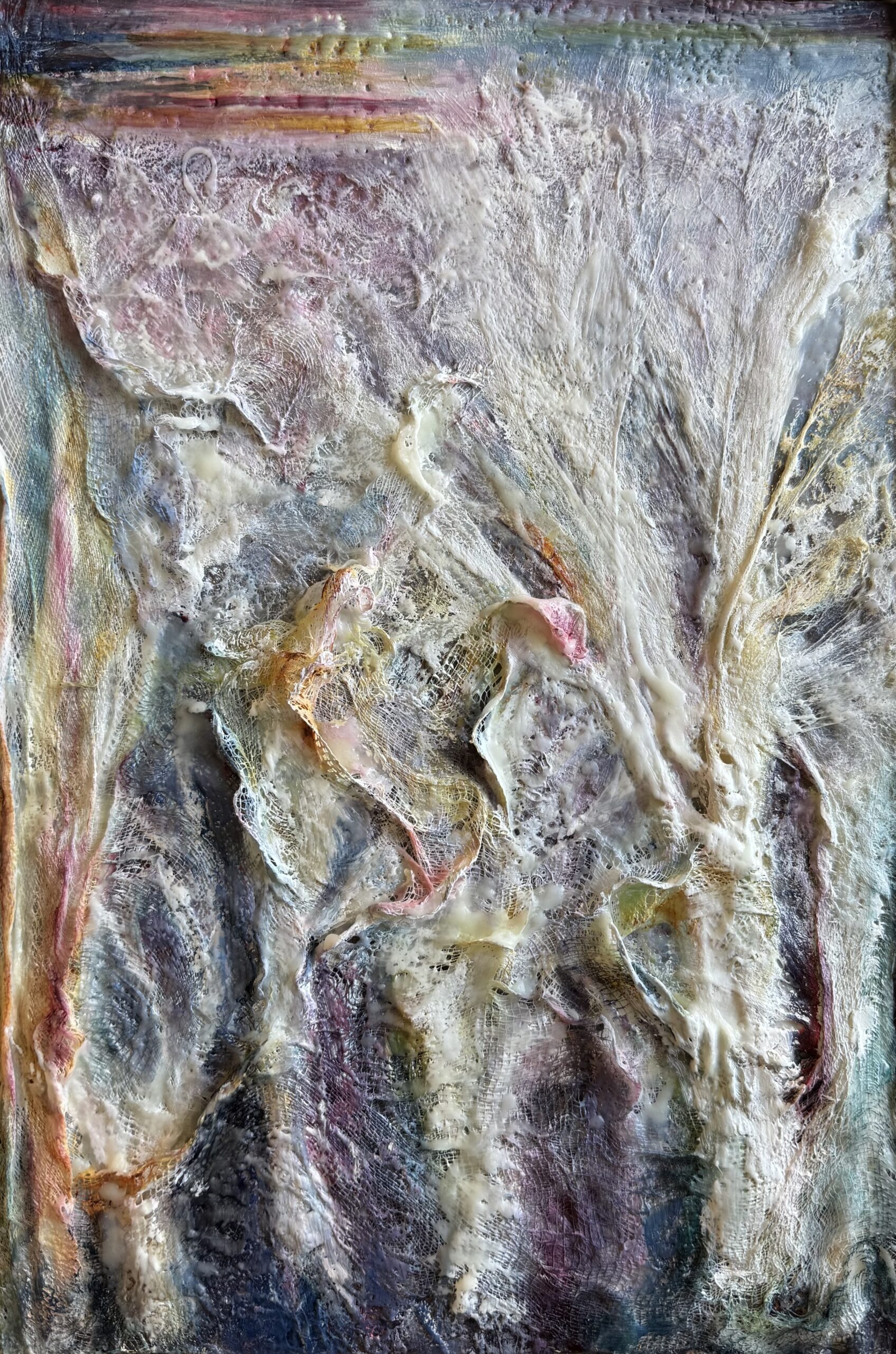
Leaving M. E. Klesse’s studio, you carry the feeling of a space that never sits still. Wax softens in warm trays, canvases breathe against the wall, and ideas seem to move through the air before settling into form. It feels honest, steady, and full of quiet energy.
Her work circles around trauma, memory, and how people keep going after life has pushed them to the edge. She gives shape to feelings that often go unspoken, and invites us to sit with them instead of turning away.
From her journey, we learn that making is not always neat or easy. It calls for listening, patience, and the courage to respond when inspiration strikes. We also see how materials, sound, and the rhythm of work can become a language for things words alone cannot hold.
To learn more about M. E. Klesse, visit the links below.
